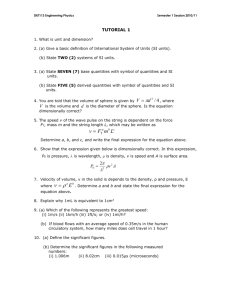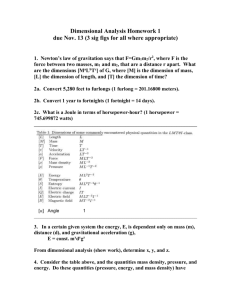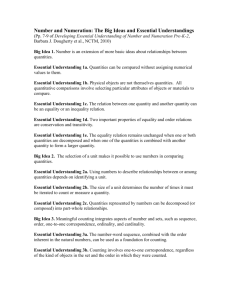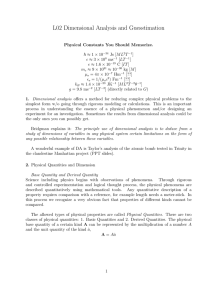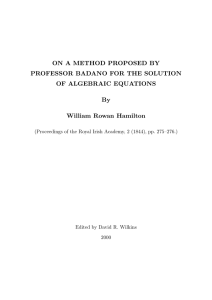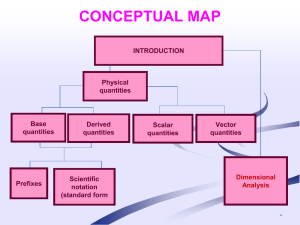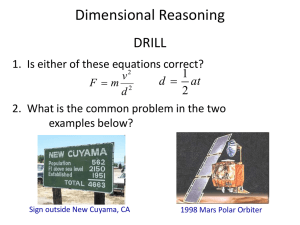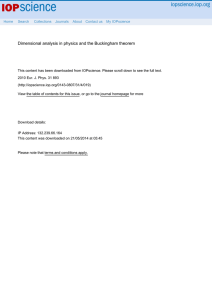Physical World and Measurement There are four fundamental forces
advertisement
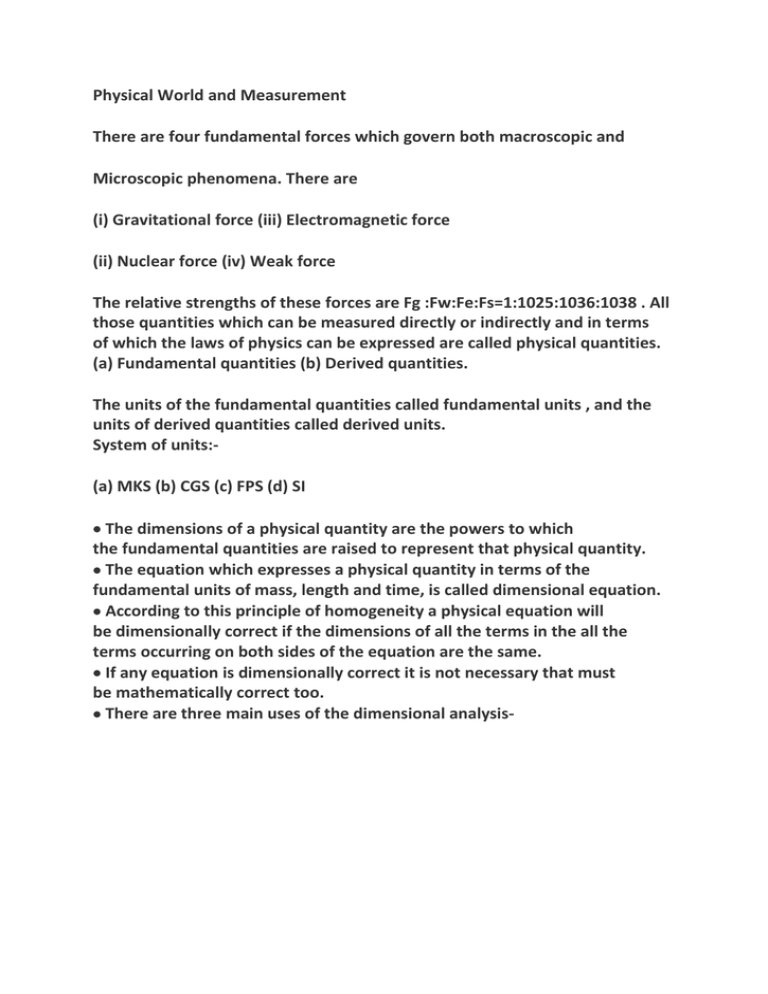
Physical World and Measurement There are four fundamental forces which govern both macroscopic and Microscopic phenomena. There are (i) Gravitational force (iii) Electromagnetic force (ii) Nuclear force (iv) Weak force The relative strengths of these forces are Fg :Fw:Fe:Fs=1:1025:1036:1038 . All those quantities which can be measured directly or indirectly and in terms of which the laws of physics can be expressed are called physical quantities. (a) Fundamental quantities (b) Derived quantities. The units of the fundamental quantities called fundamental units , and the units of derived quantities called derived units. System of units:(a) MKS (b) CGS (c) FPS (d) SI The dimensions of a physical quantity are the powers to which the fundamental quantities are raised to represent that physical quantity. The equation which expresses a physical quantity in terms of the fundamental units of mass, length and time, is called dimensional equation. According to this principle of homogeneity a physical equation will be dimensionally correct if the dimensions of all the terms in the all the terms occurring on both sides of the equation are the same. If any equation is dimensionally correct it is not necessary that must be mathematically correct too. There are three main uses of the dimensional analysis- Some quantities have no dimensions. For example, the sine of an angle is defined as the ratio of the lengths of two particular sides of a triangle. Thus, the dimensions of the sine are L/L, or 1. Therefore, the sine function is said to be "dimensionless". There are many other examples of "dimensionless" quantities listed in the following table. Panel 9 1. all trigonometric functions 2. exponential functions 3. logarithms 4. angles (but notice the discussion in the next paragraph) 5. quantities which are simply counted, such as the number of people in the room 6. plain old numbers (like 2, p, etc.)

